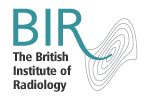
X-ray is a high-energy electromagnetic radiation. In many languages, it is referred to as Röntgen radiation, after the German scientist Wilhelm Conrad Röntgen, who discovered it in 1895 and named it X-radiation to signify an unknown type of radiation.
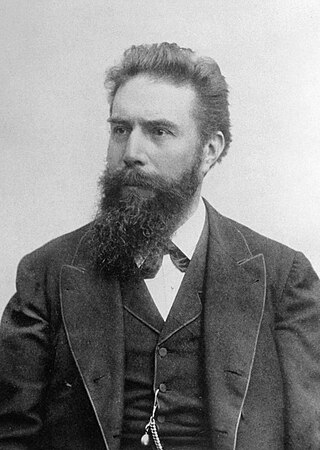
Wilhelm Conrad Röntgen was a German mechanical engineer and physicist, who, on 8 November 1895, produced and detected electromagnetic radiation in a wavelength range known as X-rays or Röntgen rays, an achievement that earned him the inaugural Nobel Prize in Physics in 1901. In honour of Röntgen's accomplishments, in 2004 the International Union of Pure and Applied Chemistry (IUPAC) named element 111, roentgenium, a radioactive element with multiple unstable isotopes, after him. The unit of measurement roentgen was also named after him.
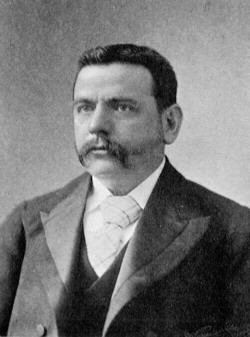
John Macintyre or Mcintyre FRSE was a Scottish medical doctor who set up the world's first radiology department at the Glasgow Royal Infirmary, in Glasgow.
Gilbert Stead was a British professor of physics and pioneer in the development of radiology as a recognized medical specialty.
Clarence Madison Dally was an American glassblower, noted as an assistant to Thomas Edison in his work on X-rays and as an early victim of radiation dermatitis and its complications. He is thought to be the first human death resulting from X-ray exposure.

The International Congress of Radiology (ICR) is a meeting of radiologists for the exchange of ideas and the harmonisation of international standards and practice, first held in 1925 in London and held at regular intervals since then. Since 1994 it has become a biennial event. Until 1953 each congress was organised by radiological society of the host country, but in that year, a formal organisation, the International Society for Radiology was set up to provide continuity between the congresses.

Charles Thurstan Holland (1863–1941) was a general practitioner in Liverpool who was best known by his pioneering research in the field of Radiology. The Thurstan Holland sign is named after him.

Elizabeth Fleischman-Aschheim was an American radiographer who is considered an X-ray pioneer. Fleischman was the first woman to die as a result of X-ray radiation exposure.

Dawson Fyers Duckworth Turner, FRSE, FRCPE (1857–1928) was a British pioneer of radiology and patron of the arts, who died of radiation related cancer.
John Webster Lowson Spence MD LRCP LRCS was a Scottish x-ray pioneer and an early victim of radiation poisoning. His name is one of 14 British professionals listed on the Monument to the X-ray and Radium Martyrs of All Nations, which was erected in 1936. In the words of his gravestone: he died that others might live.

The Monument to the X-ray and Radium Martyrs of All Nations is a memorial in Hamburg, Germany, commemorating those who died due to their work with the use of radiation, particularly X-rays, in medicine. It was unveiled on the grounds of St Georg Hospital, on 4 April 1936 by the Deutsche Röntgengesellschaft.
Dr John Haybittle was a British medical physicist.
William Webster (1855–1910) was an English chemical engineer credited with developments in gas detection, sewage treatment and medical use of x-rays. A gifted artist and musician, Webster also helped found the Blackheath Concert Halls and the adjacent Conservatoire in Blackheath in south-east London during the 1890s.
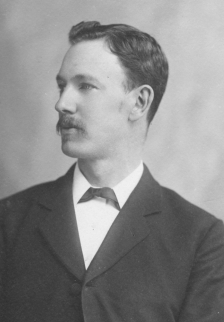
George Alexander Pirie was a Scottish medical doctor and pioneering researcher in the use of X-rays in clinical medicine.
Brian Worthington was the first radiologist to be elected a Fellow of the Royal Society and is acknowledged as a pioneer in clinical magnetic resonance imaging. He was born in Oldham, England and was educated at Hulme Grammar School, training at Guy's Hospital after graduating in physiology and medicine. After graduation his career developed rapidly, particularly in the field of MRI research and he was subsequently admitted as a Fellow of the Royal College of Radiologists.
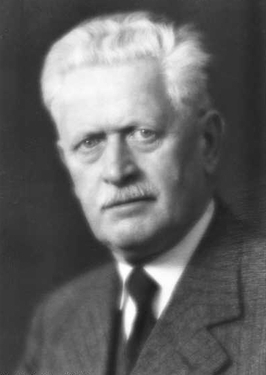
Arthur Schüller was an Austrian medical doctor who served as professor at Vienna University and was the founder of the discipline of neuroradiology. He is credited with coining the term "Neuro-Röntgenologie" and he contributed particularly to three neurosurgical procedures; antero-cordotomy, cisternal hydrocephalic drainage and the transsphenoidal approach to pituitary tumours, and is associated with three bone diseases; the Hand–Schüller–Christian disease, osteoporosis circumscripta and cephalohaematoma deformans.
James Cecil Mottram was a British physician and naturalist. He conducted studies on cancer, conducted experiments on mutation induction using X-rays and contributed to ideas on camouflage.

Sydney Domville Rowland was an English physician and the world's first editor of a radiology journal. He coined the term "skiagraphy" and wrote some of the first works on X-rays in the Archives of Clinical Skiagraphy that preceded the British Journal of Radiology.
The British Journal of Radiology is a monthly peer-reviewed medical journal covering radiology. It is published by the British Institute of Radiology and the editors-in-chief are Simon Jackson and Andrew Nisbet. According to the Journal Citation Reports, the journal has a 2021 impact factor of 3.629.
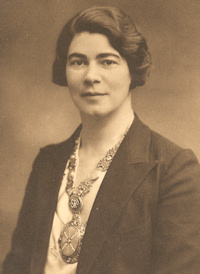
Kathleen "Kitty" Clara Clark MBE was a British radiographer who wrote the standard text now called Clark's Positioning in Radiography. She was one of the first qualified radiographers and established the teaching of radiography at the Royal Northern Hospital.
